Dairy to Doorstep Display
Tap the yellow hotspots to see more information on the selected object.
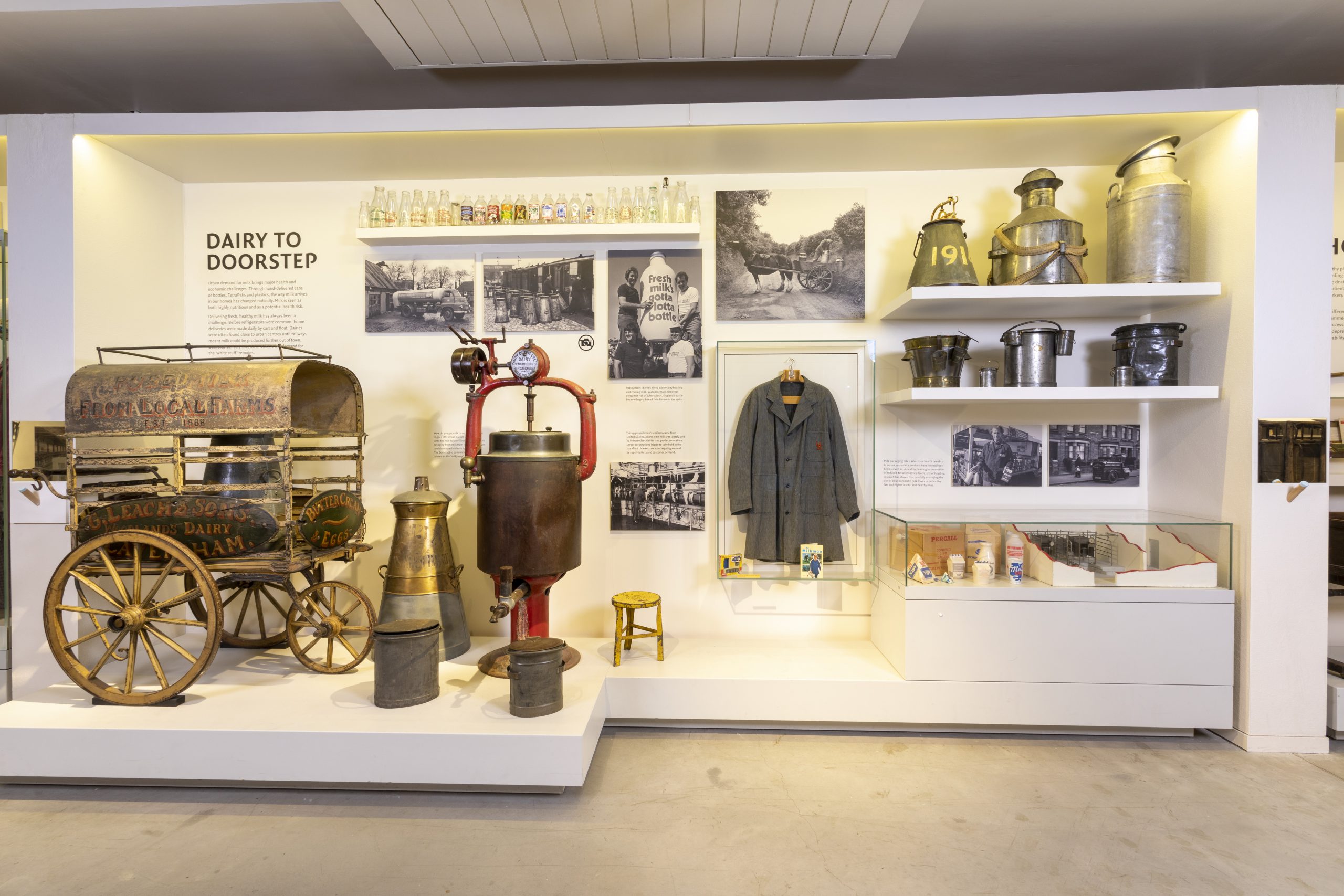
Pasturiser
Milkman's Coat
Counter Sales Pan
Dairy Cart
Glass Milk Bottles
Milking Stool
Milk Churn
Royal Show Photograph
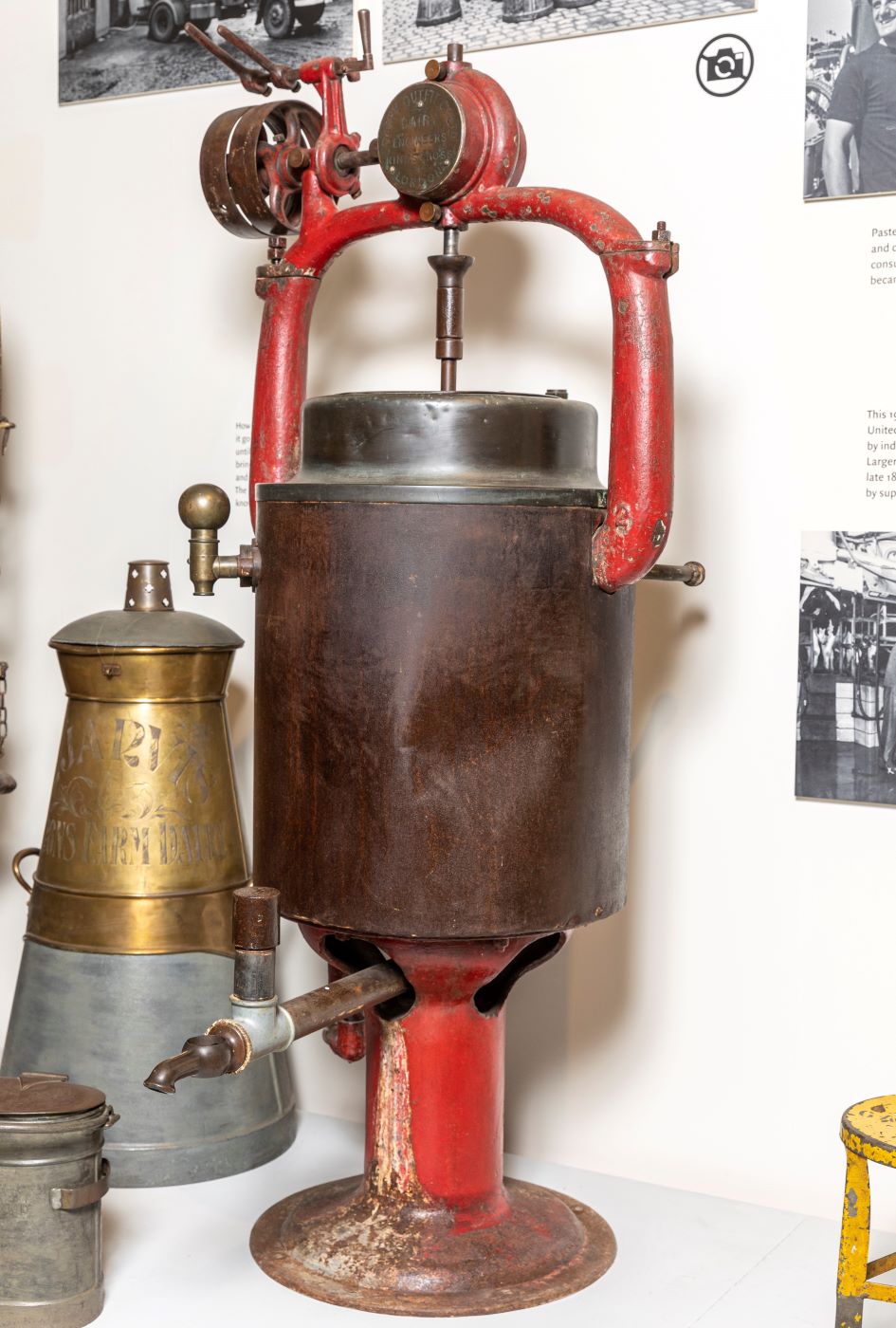
Pasturiser
This pasteuriser was used in a milk processing plant, and was then owned by the University’s Department of Dairying. It contains a paddle for stirring, inlet and outlet pipes for the milk and steam, and a safety valve.
Pasteurisation involves heating milk to 71.7˚C for around 20 seconds. This kills harmful bacteria present within the milk and significantly increases its shelf life. Invented by French micro-biologist Louis Pasteur in 1864, it was slowly adopted across the UK. It was not without opposition; for example, Lady Eve Balfour claimed that a hygienic dairy farmer should be able to produce clean milk without it.
MERL 62/16
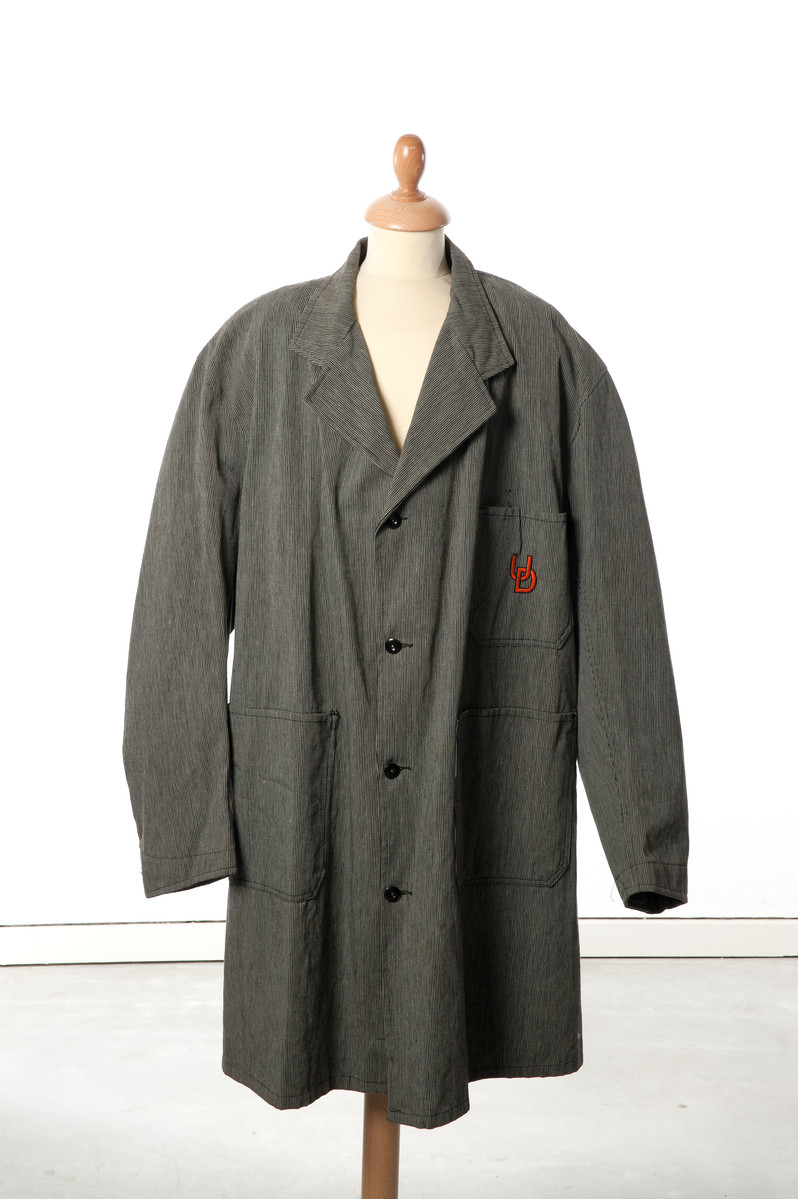
Milkman's Coat
This milkman’s coat would have been worn by an employee of United Dairies, which merged with Cow and Gate’s to form Unigate in 1959. United Dairies was one of the first companies in Britain to pioneer the sale and distribution of pasteurised milk in the 1920s.
Milkmen were introduced to the UK in the mid-19th century, when fresh milk was carried into cities by new railway lines. Due to its short shelf life in the time before refrigeration, it was more convenient for milk to be taken straight to the doors of customers. Cheap supermarket milk, with a longer shelf life, has led to a decline in milkmen.
MERL 2011/11
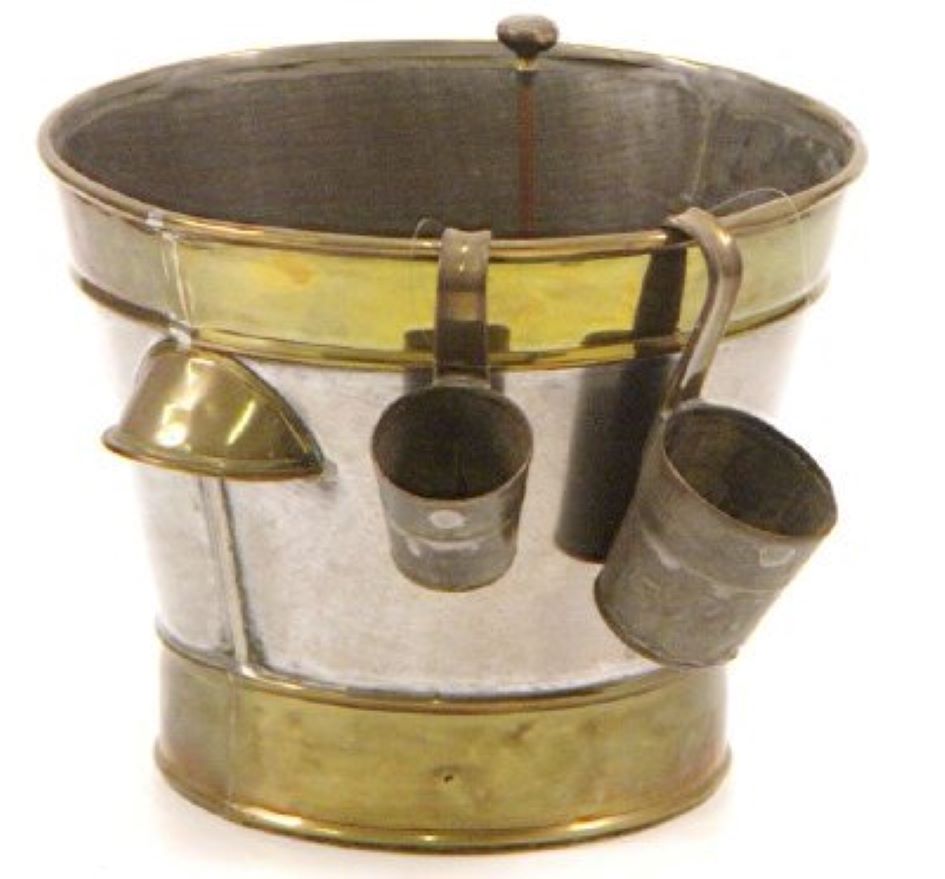
Counter Sales Pan
Dating to the late 19th century, this milk counter pan displayed milk for sale at St John’s Dairy in Reading. It holds 20 pints of milk and comes with three utensils. Cream floats to the top of fresh milk, and the stirrer would be used to mix it back together. Meanwhile the measuring spoons would dispense the milk to customers.
Milk shops in this period sought to improve the reputation of the dairy industry. Cows would be visible in the back of the shop to convince customers the milk was fresh, uncontaminated, and not watered down.
MERL 54/358
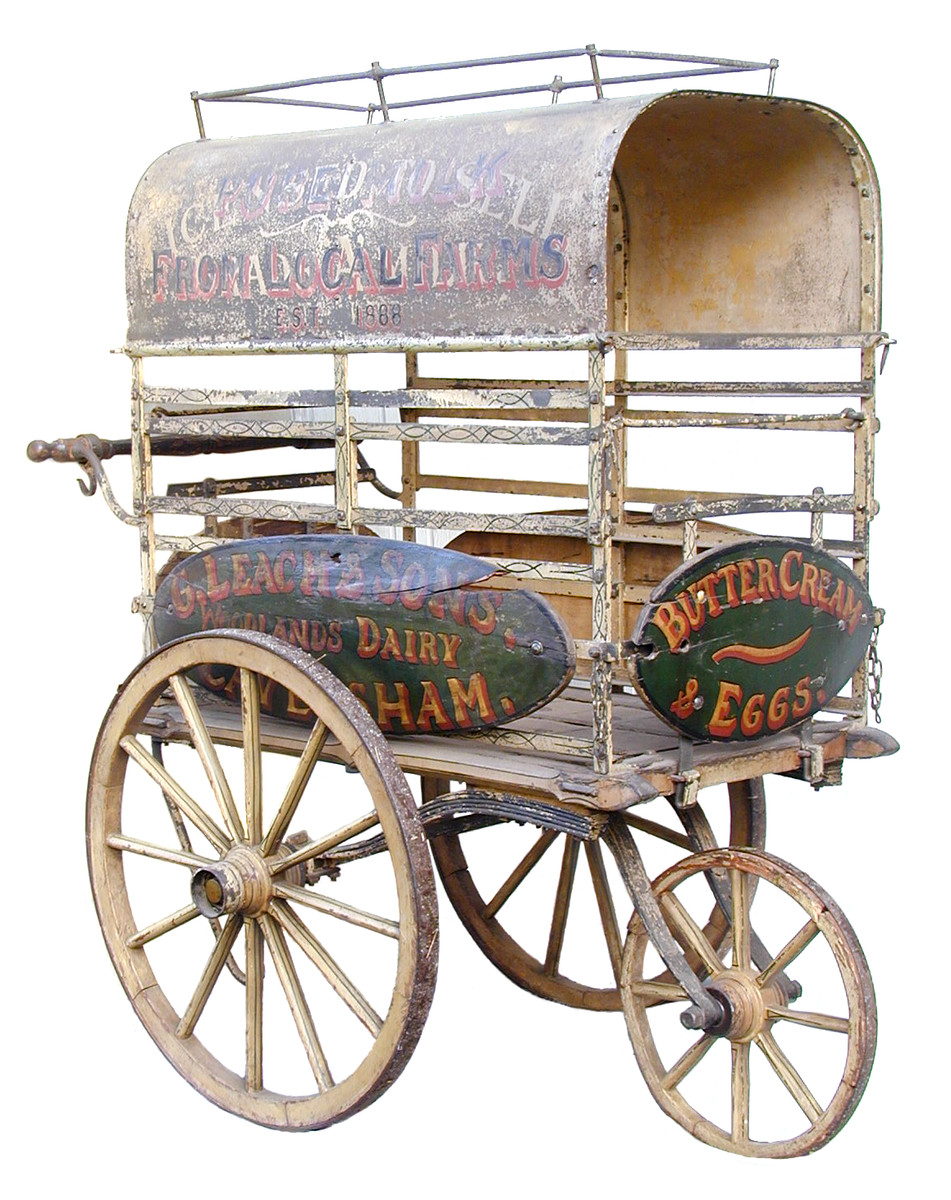
Dairy Cart
This cart – also described as a ‘barrow’ due to its design – was used to transport dairy products for sale. Not every dairy had its own shop, and so carts like these would be used to take produce to market. The name ‘Woodlands Dairy’ is proudly advertised on the side.
In 1925, when this cart was made, demand for dairy produce was sharply increasing. Yearly milk consumption rose from 9 gallons per person in 1861 to 22 gallons in 1931. This was due to new innovations such as pasteurisation and the milk bottle, and the discovery of milk’s nutritional value.
MERL 59/276
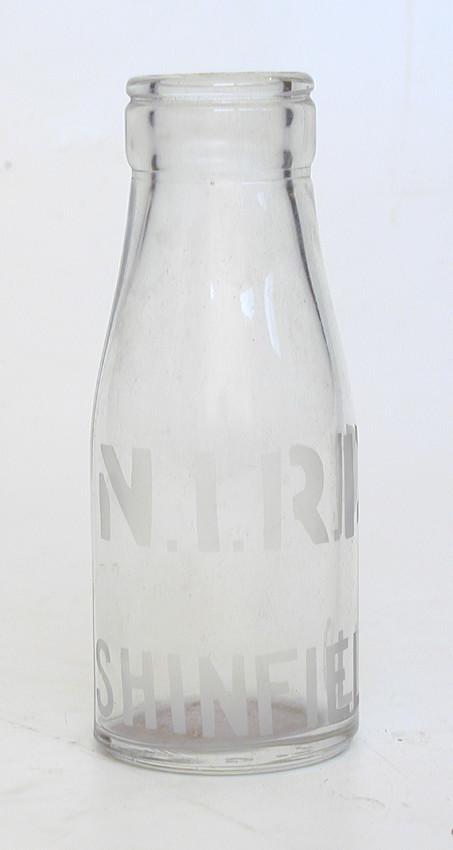
Glass Milk Bottles
Glass milk bottles were first introduced to the UK in the 1880s, and played an important role in the improvement of milk hygiene, ensuring no harmful bacteria could get into the milk after the cap had been secured. They also provided customers with a clear view of the milk, and ensured every customer received the same amount.
94% of milk was sold in glass bottles in 1975, which has reduced to less than 4% today. This can be attributed to a decline in home milk delivery. This bottle was used at the National institute for Research in Dairying in Shinfield.
MERL 96/18/19
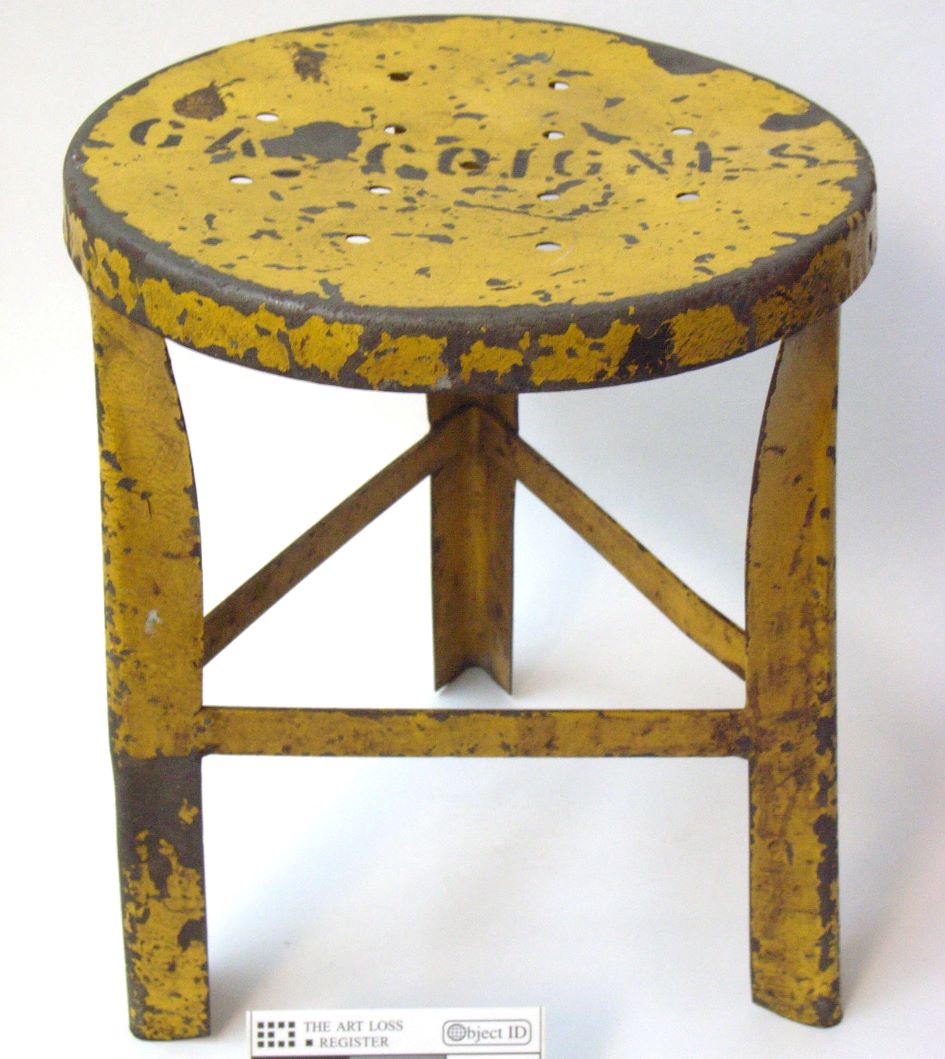
Milking Stool
Until the end of the 19th century, milking stools were an essential piece of kit for a dairy farmer, as they would spare the farmer’s knees when squeezing milk from a cow’s udder.
Humans began drinking cow’s milk around 8000 years ago, despite the fact that all adults were lactose intolerant at the time. It was likely first tried by people who would have otherwise starved. Over the years, genetic mutations resulted in the ability to digest milk. However, the process did not have time to fully complete, as many people are still at least partially lactose intolerant today.
MERL 2006/3
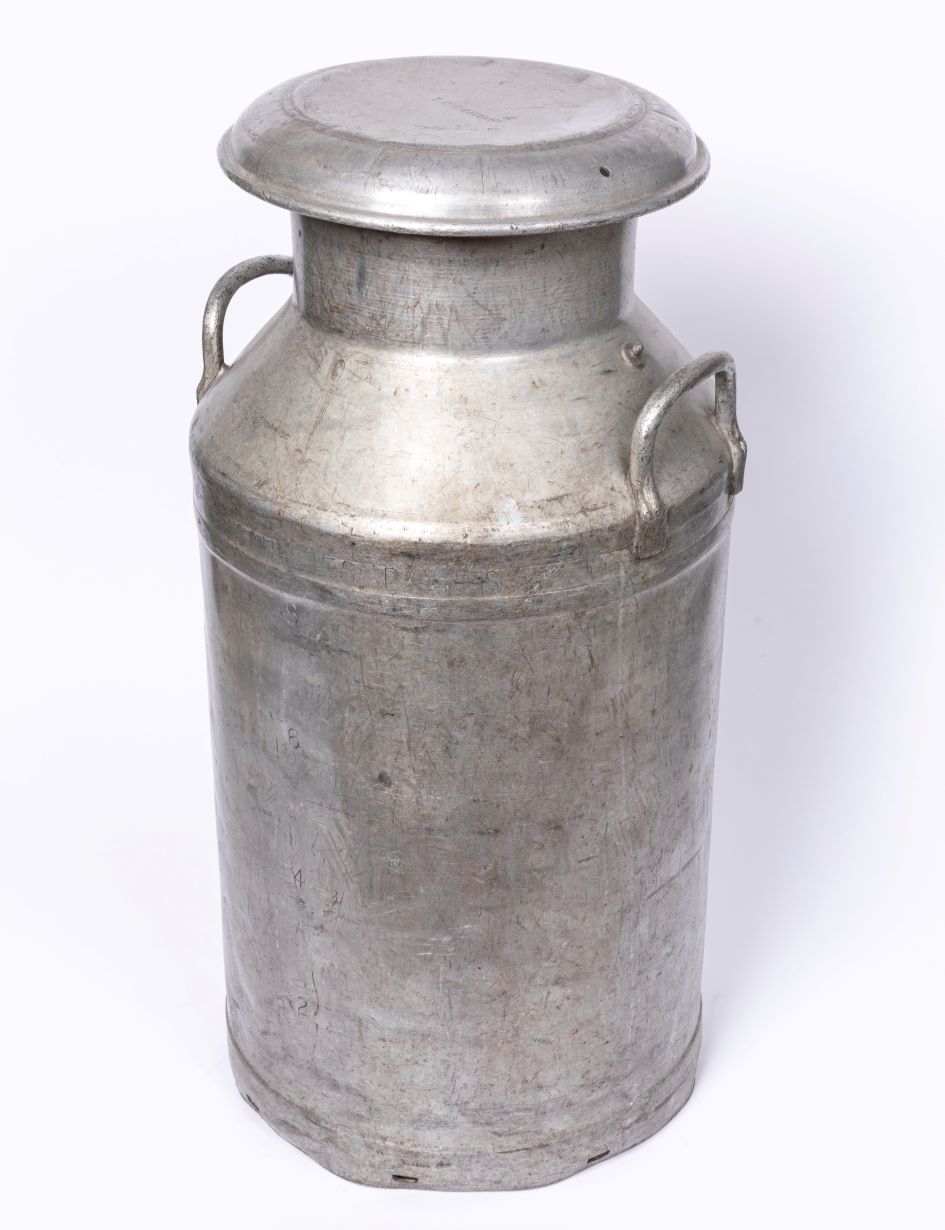
Milk Churn
Used for transporting milk, this churn was used occasionally by a stockbreeder named Joseph Bevan who kept cattle and sheep.
Methods for transporting milk evolved in the 19th century. Previously, urban populations had received milk from cramped cowsheds within the city boundaries. However, the development of railways led to the rise of ‘milk trains’ which could deliver churns of fresh milk from rural dairy farms before it went sour. They continued to grow in popularity into the 20th century, until the Milk Marketing Board switched to road transport in the 1960s.
MERL 2012/431
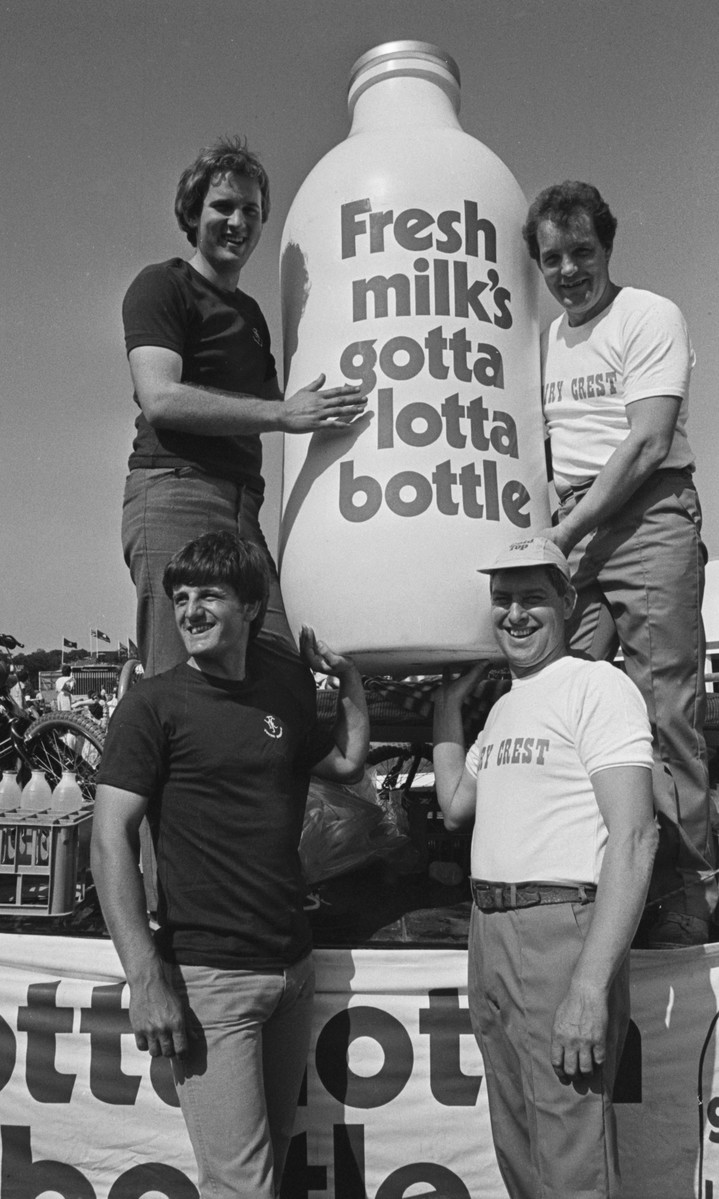
Royal Show Photograph
This photograph, taken by agricultural photographer Peter Adams, shows a display from the 1983 Royal Show. These shows were organized by the Royal Agricultural Society of England to showcase British products and inventions. They frequently attracted over 100,000 visitors, many of them international.
These three men are standing in front of a ‘Food from Britain’ poster. This was a government initiative, established in 1983, to promote British food exports. These exports reached record-breaking levels in 2007, just before the initiative dissolved, suggesting it had been a success.
P PAD A PH1/188/1